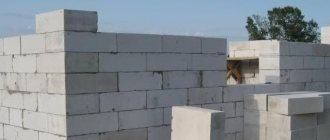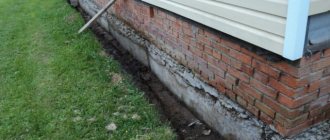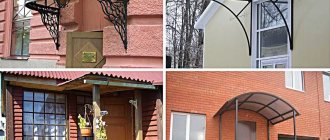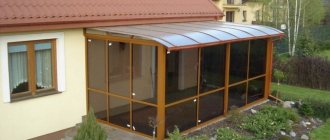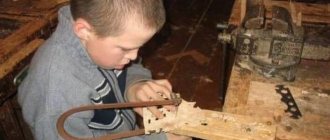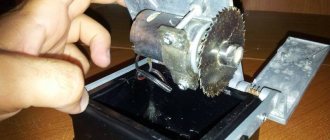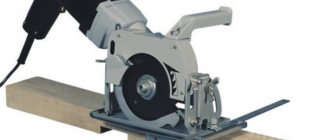City sewer - this is the main channel that collects and discharges wastewater to treatment facilities. Traditionally, it is laid underground, below the freezing level of the ground. If we judge such a system from an engineering point of view, then this is just a pipeline with a large diameter, and it is larger than other pipes in the system. We will begin to consider the description of the device from the other end of the system, namely the networks that are connected to homes.
Purpose and design features
Not all users know what a sewer collector is. At the same time, most people have a rough idea of the general structure of the system. The term itself and the definition of the element are unfamiliar.
The term itself refers to a large underground pipeline or channel. Sometimes entire rivers are placed into collectors. For example, placing the Neglinnaya River underground in Moscow.
The sewer is the main pipeline through which wastewater moves from drainage areas to treatment systems. Its length can be several kilometers or limited to a few meters. Depending on the size, ready-made pipes or building materials are used for construction:
- brick;
- reinforced concrete blocks or monolithic casting.
The use of brickwork has now been phased out due to the slow speed of construction. The construction of sewer collectors requires high speed, so they use prefabricated channels made of reinforced concrete rings, or pour them directly on site. However, modern systems are built from ready-made plastic elements. They are superior to all alternative options in terms of assembly speed, durability, resistance to water and aggressive substances. During renovations, old systems are often replaced with new plastic channels.
The sewer collector of a typical city system is not too large. Its cross-section provides the capacity of the city network, taking into account the reserve factor in case of an increase in the number of users. To remove blockages and pierce plugs, collector wells are installed along the entire length. They provide access for repair work. In addition, wells are placed at nodes or at turning points of the line. At the bottom of the wells, gutters are installed connecting the inlet and outlet pipes. They perform a guiding function and help conserve flow energy.
Danger of using an underground system
Now it’s worth saying a little about diggers and other lovers of exploring underground communications - why are they so drawn to visiting underground tunnels? There is no single and correct answer to this, since young people are attracted by romance and adrenaline from what is happening, the desire to be in a forbidden and unknown place. Fantasy lovers want to imitate literary heroes, while more down-to-earth and selfish people are interested in the opportunity to find something valuable and sell it. But it should still be taken into account that in case of danger it is very rarely possible to quickly leave such a tunnel.
Do not forget that it is very difficult to get to the surface from such places, as many dangerous situations can arise:
The possibility of a sudden discharge of wastewater in one gulp can lead to a short-term but complete filling of the canal, and this even has the risk of death for anyone who finds itself there.- Security facilities that are connected to a city-scale sewer can attract the attention of criminals and simply dubious individuals, and meeting them underground will not do anything good.
- There is also a high probability of poisoning with methane gas (CH4), as well as toxic fumes, which is why everything can end sadly for travelers through the tunnels (even death).
- There are risks of vault collapses in old sewer sections, etc.
Please note that it is very easy for an unknowing person who gets inside for the first time to get lost. Such cases, unfortunately, are not at all uncommon, and not always everything ended well.
Typically, all tragic incidents occur due to the fact that rules and safety requirements are not followed. Such rules are collected in a document called “Inter-industry rules for labor protection when using water supply and sewerage facilities” and are intended for those specialists (primarily) who are directly involved in the repair and use of tanks and sewer wells.
In this document, which not only talks about the construction of collectors, in section 5.2 there is a mandatory list of devices and means (this includes measuring devices that each member of the team should have) that should be used during launch into the manhole, emergency tanks regulating type, sewer collectors and pressure drained water pipelines.
Here are some lines from the list:
- Gas analyzers or gas detectors.
- A rope for insurance, which is attached to a safety belt, its length should allow the possibility of lifting a worker even from the most remote workplace inside the well.
- Rechargeable flashlights.
- Gas masks with forced air supply.
- Fans.
- Tools for opening valves in a well.
- Rods for testing the strength of well brackets.
- Safety fences with safety sign.
- Portable types of stairs.
This is the most basic thing, and should always be with the master.
Principle of operation
Having found out what a sewer collector is, let’s consider the principle of its operation. Wastewater from plumbing fixtures enters horizontal yard networks. They are connected into quarters and eventually join the main highway. It transports wastewater to treatment facilities. Thus, the sewer collector is a common pipeline that connects all the small lines together. It itself never branches into parts.
In autonomous systems of private houses, the role of the main element of the sewer system is played by a horizontal pipe connecting the system exit from the house with the receiving section of the septic tank. Its length is usually short, but the function it performs is no different from the tasks of large sewer pipelines.
In addition, there are storm drainage systems. They differ from household or industrial networks in their seasonal operating mode and relatively shallow depth of immersion in the ground. A storm sewer is a channel that carries rainwater to treatment systems. It can be implemented in the form of an underground pipe or in the form of an open gutter.
There are two types of channels, differing in the way wastewater moves:
- gravity type. Pipeline installed with a slight slope. Waste liquids move through it independently, under the influence of gravity;
- pressure sewer collector. Designed for forced supply of wastewater from a lower level to a higher level.
Gravity lines prevail because they are more profitable and simpler. However, sometimes it is necessary to use a pressure type sewer system if the terrain requires it, or if there are buildings, structures, or highways in the way of pipe laying.
A sewerage pressure manifold is a sealed pipeline designed for a certain fluid pressure. The wastewater is moved through it using a special pump. To reduce loads and save energy, the pressure sections of the collectors are made small. Typically, a sewage pressure station (SPS) is installed, which supplies wastewater under pressure to a certain height. The liquid then follows by gravity.
The lifting of wastewater can occur either downhill or using a vertical pipeline. The choice of a suitable method is made based on local conditions - topography, presence of structures or buildings, soil characteristics.
Pressure sewerage system made from pipes
The main element of the pressure sewer system is the SPS (sewage pressure station). The sewage pumping station collects all wastewater located in the internal pipelines of the building. The force of a powerful pump transports waste to the place of disposal. The pumping station operates as a storage tank, but only up to a certain level (for more details: “KNS sewage pumping station - principle of operation and types of installation”).
If such a distance cannot be ensured for one reason or another, or if sewer pipes must be laid higher than water pipes, then protective measures must be applied. Such measures may include laying a water pipeline from steel pipes or a sewerage system from cast iron, laying a water pipe in a protective case with a length of at least 5 m in each direction from the intersection in clay soils and 10 m in filtering ones.
If the sewer collector crosses the walls of tunnels, chambers, basements, etc., it must be enclosed in a case, the ends of which extend 0.2 m from the outer plane of such walls. The vertical distance between the sewer pipe and other communications intersected in the tunnel is at least 0.15 m.[.
The reasons may be different:
• if there is no free-flow sewer nearby for tapping, pressure sewers pass nearby, and water discharge into free-flow networks is impossible; • if the organization of a natural slope is impossible due to the large distance to the free-flow collector; • if the water intake point is located at a great depth; • if laying a gravity sewer is expensive or troublesome.
How to install polypropylene pipes?
Which radiators are preferable to use in an apartment or house?
www.684015.ru
Installation features
Sewerage construction is carried out on the basis of design data. Preliminary calculations and creation of an assembly diagram are carried out in accordance with SNiP and SanPiN standards, ensuring full compliance with all requirements.
The pipeline is laid at a depth exceeding the winter freezing level of the soil. Procedure:
- excavation. They dig a trench for the pipeline. Immediately make nests for inspection wells;
- a sand cushion is poured onto the bottom of all recesses to level and give the desired slope;
- by laying pipes with a certain slope towards the receiving tank (usually for gravity systems 2 cm per meter);
- if plastic containers for wells are used, a concrete slab - an anchor - is first laid at the bottom. It prevents the reservoir from being squeezed out by groundwater;
- All connections are carefully sealed. Check the system for leaks. After this, the pipes are insulated and covered with soil.
When constructing pressure sets, the SPS is first assembled, after which the remaining trenches are laid according to the described scheme. For maintenance and repair of pumps, it is necessary to ensure access to the station at any time of the year.
Self-assembly of a heating manifold
Heating collectors are usually supplied assembled by the manufacturer; a standard-length circulation pump is installed later on an American-type threaded connection. Sometimes components are supplied to consumers separately; the assembly procedure consists of the following operations:
- Flow meters are installed on the supply comb and the end air vent is screwed into the right end.
- A valve is connected to the return comb with previously installed caps on the shut-off valves through the American connection on the right side.
- On both combs on the left, through the American connection, connectors are installed to connect the compression electric pump, and they are positioned so that the fitting for installing the thermometer is on the front side.
- A tee is screwed into the return comb, to which the thermostatic head is connected.
- Using a threaded connection (American) for mounting electric circulation pumps and gaskets from the kit, the pump is connected to the upper and lower combs.
- Upon completion of the work, pipes of standard diameter are connected to the collector block using the Eurocones included in the kit.
All main connections are sealed using rubber gaskets supplied with the unit and the electric pump; sometimes seals are missing in the tap and tee of the supply comb, then linen tow or other plumbing materials are used for sealing
To carry out the work, one adjustable wrench is enough, but it is important not to overtighten the nuts - this can lead to rupture of the gaskets
Rice. 18 PEX and PE-RT pipes
Purpose and design features
The sewerage element is designed to drain sewage and waste to a collection point. Various materials are used to create them:
- brick;
- reinforced concrete - monolith or ring products;
- plastic – polyethylene, polypropylene and PVC.
The latter option is in greatest demand due to the ratio of cost and quality. To give the plastic pipeline the necessary rigidity, the walls are corrugated. And so that the uneven surface does not reduce the throughput, the inner layer is made smooth.
The collector networks and sedimentation tanks of individual houses or even neighborhoods are united by common wells: they are necessary for inspection of devices and networks, their preventive or emergency cleaning. The installation of well structures is also required in key areas and at bends.
Rotary structures in sewers are usually equipped with gutter inserts with a guiding function. They are necessary to reduce the hydraulic resistance of the water flow - so it can easily overcome even complex curved areas.
There are special drop wells - they are used in difficult landscapes if it is necessary to modify the depth of sewerage pipelines.
Underground collectors require high-quality ventilation. To do this, the system is equipped with free-standing pipe sections (with a cross-section of at least 300 mm). They are installed at a distance of no more than 0.5 km from each other.
How to install
When installing parallel wiring in an apartment, the main branch does not have branches; it is attached to the distributor to which the power lines are connected.
To install the comb, you need to purchase tools. The process consists of several stages:
- Ball valves are installed where the comb is attached to the main branch. This is necessary for isolation from the general water supply.
- a coarse filter is installed. This measure will prevent large particles from entering the devices when dirty water circulates through the pipes.
- Measuring instruments have been installed.
- After installing the meters, you can install fine cleaning devices (optional).
- it is installed to prevent water from flowing back from the distributor into the riser when the flow rate decreases.
- In a private home, it is recommended to install a pressure reducer. If there is excess pressure, excess liquid will flow into the sewer.
Then the collectors are mounted: separately on the cold and hot water risers. Each branch is equipped with a valve. The decisive point is the number of consumption points corresponding to the number of outlets. Only when cold water is supplied, the comb outlet directs water to the heating device. From the water heater, the liquid flows into another manifold to distribute hot water.
Hidden installation of the collector is possible due to the lack of communication between the device and other devices. When installed hidden, pipes with cold water are hidden in a special polyethylene (foam) sleeve. The distance will compensate for thermal expansion.
If the water supply, in addition to heating radiators, has circuits for heated floors, it is recommended to install mixing units in the connections. The water will circulate in an isolated circuit at a lower temperature, the unit will add hot water as the floor cools. However, installation is not carried out if the system consists only of heated floors. An armature with mechanical drives is attached to the return collector.
If the circuits differ in length when connected to the same valve, it becomes necessary to install a balancing flow meter. The ability to pass water is adjusted by turning the ring. The exact range is displayed in the scale window.
When installing water supply distribution, no control valves are needed, because they are completely turned off. The devices are mounted in wall niches in dry rooms. The device is often placed in the toilet. It is recommended to install the devices in suitable cabinets.
Operating principle and advantages
According to the principle of operation, collectors are classified as follows:
- Collecting wastewater from only one sewer basin.
- Main devices that collect drain liquid from two or more collectors;
- Suburban structures that discharge wastewater to treatment facilities, pumping stations or into a reservoir.
The installation of the collector complex must be carried out correctly; only this guarantees reliable drainage of wastewater. Installed in both gravity and pressure systems.
The pressure sewer collector is equipped with a pump. Such a system is easy to install on any terrain. All waste is transferred to a special sealed tank, then, using a pumping station, it is crushed and pumped to treatment facilities.
The main advantages of a pressure-type collector network are:
- Reducing the volume of installation work.
- Savings on materials due to the fact that the pipeline length is shorter than with a gravity system.
- Reduced installation time.
Without replacing parts, a properly installed manifold system can last more than half a century.
The cross-section of pipe lines for the collector network depends on the volume of wastewater, and their throughput is calculated so that the flow speed is no more than 0.7 meters per second. When it is reached, sewer pipelines are able to self-clean.
What is a water supply collector and why is it needed?
A water supply collector is a device that divides a significant flow of water into several smaller ones. To ensure sufficient pressure in the device, the inlet radius is approximately 20-40% larger than the outlet.
water supply collector
The water distribution manifold is a hollow cylindrical structure that is used to distribute liquid properly and evenly among different users. This device is used for parallel branching of pipes. The device allows you to normalize the pressure, thereby preventing the occurrence of water hammer.
It is believed that the collector system is much more effective than the classic one, consisting of risers and tees. Despite this, the cost of such a design is much higher. That is why, before giving preference to one option or another, it is necessary to understand all the features of the collector and the rules for its installation.
Types of containers for the collector
Reservoirs connected to the mains are used to accumulate contaminated water or to clarify and filter it. In domestic conditions, three types of collector pipelines are used, and treatment tanks are selected in accordance with their intended purpose.
Household collector
The choice of household cleaning device depends on several factors:
- mode of use;
- number of residents;
- dependence on energy resources;
- soil features.
There are small treatment facilities for dachas and small-family houses, as well as complexes that can serve an entire village. When choosing, the possibility of connecting to a power source is taken into account.
Collector design and principle of operation
The collector has the shape of a cylinder with holes on the sides. Overlapping devices are installed on the comb to regulate the pressure of the water flow. On the front side there is an inlet hole, the diameter of which is larger. Receives water from a water supply source.
There are internal and external threads on 2 sides of the device. By means of a threaded connection, the device is connected to the line, if necessary, to another collector. Connections are fixed on the sides, leading the system to different points of consumption. This system is called parallel.
In some cases, a shock absorber or plug is placed at the end of the device.
The collector can have from 2 to 4 sockets. To supply water to a large number of points, several collectors are connected, and plugs are placed on the remaining holes.
Installation of a collector network
After taking measurements and drawing up a design for the structure, excavation work is carried out:
- Below the freezing level of the earth, a ditch is dug for collector lines and pits for wells.
- A sand and gravel cushion about 15 cm thick is laid at the bottom of the trenches and compacted. Pipes are laid on top or well tanks are installed.
- For a gravity sewer system, the mains are installed with a slope of 2 cm per meter of pipe towards the storage tank.
- Pipes and plastic containers are insulated, and the latter are anchored if necessary.
- The joints are sealed, then the system is tested for leaks by pumping water inside.
If the test is successful, the trench is dug, the outlet of the main is first lowered into a storage tank or connected to a septic tank.
The sewer network is an important part of the sewer system. If it is installed incorrectly, the entire sewer system will not be able to function.
Most people who are far from plumbing know about city sewerage only that the vertical pipe in the bathroom is called a riser, and the sewer is something incomprehensible, hiding in the wells. Today we are going to get acquainted with the structure of the wastewater system - from intra-apartment wiring to treatment facilities. So let's get started.
Installation and connection of pipes
After preparing the pipes for the water supply, you can install water supply in the apartment. When installing home plumbing, do not forget that any threaded connections must be placed in accessible places for ease of maintenance. Brazed or welded pipes can be buried in the floor or wall.
Installing plumbing in an apartment also involves installing additional equipment designed to extend the life of the entire plumbing system. To purify water from impurities (sand and rust), it is advisable to use water purification filters, which come in three types:
- rough cleaning;
- fine cleaning;
- devices for drinking water purification.
It is worth noting that coarse filters can extend the life of the water supply system. As for fine filters, their purpose is to retain small particles such as salts and limestone. As you can see, plumbing in an apartment can cause a lot of difficulties and problems that you cannot solve on your own every time.
- Almetyevsk
- Volgograd
- Voronezh
- Ekaterinburg
- Zelenodolsk
- Yoshkar-Ola
- Kazan
- Krasnoyarsk
- Fly
- Naberezhnye Chelny
- Nizhnekamsk
- Nizhny Novgorod
- Novosibirsk
- Permian period
- Rostov-on-Don
- Samara
- Saint Petersburg
- Ulyanovsk
- Chelyabinsk
- Yaroslavl
If a major renovation is underway or a bathroom is being built from scratch, then it makes sense to take a closer look at the water distribution of the collector.
- – economical
- Collector wiring - practical
Intra-house system
Let's start with that part of the wastewater disposal system that is located within the walls of the house.
Comb
What is a sewer comb?
This is what is called internal wiring. It got its name from the shape characteristic of apartments with adjacent bathrooms and kitchens: three outlets on a horizontal pipe (for a kitchen sink, washbasin and bathtub) actually somewhat resemble a comb.
In the last century, until about the 80s, the traditional material for the comb was cast iron pipes and cast iron fittings. The socket joints were hammered with heel (organic fiber with antiseptic impregnation) and covered with cement mortar. Less commonly, pouring molten sulfur was used to seal joints.
Please note: when dismantling such connections with your own hands, you have to warm them up with a hairdryer, torch or blowtorch. Work is performed only in a gas mask or respirator. The instructions are due to the fact that the fumes are extremely caustic: they can cause respiratory paralysis.
In houses built at the end of the last century, solid polyvinyl chloride combs predominate. In current new buildings, sewage systems inside apartments are installed mainly from the same polyvinyl chloride pipes; however, now it has become prefabricated and is performed on socket joints with rubber ring seals. Along with PVC, polypropylene and, somewhat less frequently, polyethylene are used.
Risers
The combs, located one above the other, are connected by a sewer riser. The evolution of the materials used was somewhat shorter than in the previous case: builders switched from cast iron risers straight to prefabricated plastic ones.
Polyvinyl chloride
PVC pipes are environmentally friendly.
PVC pipes, specially made for pressure sewerage, are used in private homes, as they are environmentally friendly and safe for health. Such pipes are not flammable and do not emit harmful substances and hazardous chemical compounds in the event of a fire. PVC is resistant to temperature changes, is not afraid of ultraviolet radiation and is not exposed to aggressive environments. The presence of chlorine atoms in the composition of polyvinyl chloride makes pipes made from it indispensable in fire-hazardous areas, since such a compound gives the material the ability to self-extinguish and contributes to the speedy elimination of a fire. The throughput of the pipes is high, and the possibility of self-cleaning allows the system to clog less often. In this case, no additional processing is required, there is no need for painting or applying a special layer, PVC resists the effects of external factors well. PVC pipes are durable and will last a long time. For a private home, they may be more suitable than cast iron ones, as they are light in weight, which makes installation easier. They are connected either by welding or using embedded couplings, which provides good sealing and does not require heavy and complex special equipment.
Yard sewer, collector
Well
The walls of a sewer well are usually reinforced concrete rings with seams and brackets sealed with mortar, making it possible to descend into it without additional devices. Cover - cast iron hatch; the bottom is a concrete tray.
As you might guess, the wells along the apartment building are located exactly opposite the outlets. They are connected to each other by a large-diameter cast-iron pipe (200-300 mm), laid at the bottom level or slightly higher (in the case of drop wells that compensate for the slope of the area).
Important: deep wells can accumulate methane and other gases produced during the decay of organic matter. By themselves they are not considered highly toxic; however, a minimal amount of oxygen in the air can cause suffocation and even loss of consciousness. When cleaning an outlet or tray, insurance is required.
All sewer lines from the house to the collector are equipped with inspection wells. The step between them in this case also depends on the diameter of the pipe.
| Diameter | Maximum distance between wells |
| 150 mm | 35 m |
| 200 – 450 mm | 50 m |
| 500 – 600 m | 75 m |
Advantages and disadvantages of the collector system
Separately, it is worth noting the advantage of being able to connect consumers located at a remote distance from the riser. The presence of a valve on each branch allows cutting in lines, which is very convenient for repair and maintenance.
The advantages of collector wiring are:
- Constant water pressure and continuous supply in sufficient quantity.
- Easy to audit to identify blockages and other pipeline faults.
- Minimum number of connections most susceptible to leaks. There are not as many tees as in a series circuit, which is called tee wiring.
- Possibility of local pressure shutdown for preventive and repair work when eliminating household breakdowns (washing machine, mixer, shower, bidet, bath, etc.). In this case, you can use other devices and devices.
To maintain the attractiveness of the interior, such wiring is hidden in a box with a hatch through which the collector is fixed, the operating mode is controlled, and the taps are closed. The remaining elements of the harness can be hidden in the walls or floor.
With all the advantages, there are also disadvantages:
- High price. More materials and fasteners will be required. The number of pipes that will have to be spent during the installation process exceeds the minimum purchase volume, as in the case of a series connection.
- Difficult to install. It's not just about the front end of the job. Difficulties may arise already at the calculation stage. Of course, you can figure this out yourself, but hiring specialists is an unconditional plus and a guarantee of the system’s effectiveness. True, the volume of work (as well as complexity) leads to an increase in the estimated cost.
But these disadvantages are already covered by the fact that each department can be equipped with additional equipment necessary for the smooth operation of equipment and plumbing. Then the check valve will save water in the boiler, the pressure switch will set the required mode, etc.
But all this will only work if the circuit is drawn up correctly. The manifold cuts into the riser (after the meter and the ball shut-off valve). A tube leading to the consumer is connected to each branch using a threaded connection. It can be integrated with all additional equipment needed for efficient and safe operation.
Polyvinyl chloride
PVC pipes are environmentally friendly. PVC pipes, specially made for pressure sewerage, are used in private homes, as they are environmentally friendly and safe for health. Such pipes are not flammable and do not emit harmful substances and hazardous chemical compounds in the event of a fire. PVC is resistant to temperature changes, is not afraid of ultraviolet radiation and is not exposed to aggressive environments. The presence of chlorine atoms in the composition of polyvinyl chloride makes pipes made from it indispensable in fire-hazardous areas, since such a compound gives the material the ability to self-extinguish and contributes to the speedy elimination of a fire.
https://masterseptika.ru/youtu.be/MJamp08QWU4
The throughput of the pipes is high, and the possibility of self-cleaning allows the system to clog less often. In this case, no additional processing is required, there is no need for painting or applying a special layer, PVC resists the effects of external factors well. PVC pipes are durable and will last a long time. For a private home, they may be more suitable than cast iron ones, as they are light in weight, which makes installation easier. They are connected either by welding or using embedded couplings, which provides good sealing and does not require heavy and complex special equipment.
Types of wells and installation locations
The main task of wells is to monitor the general condition of systems.
Not so long ago, only concrete was used to create wells.
Reinforced concrete products such as rings, covers with holes for manholes, and bottoms, which are currently produced in large quantities, are used in the installation of high-capacity storm sewers.
In private houses, they made cesspools with their own hands, digging holes to a certain depth. After this, the walls were covered with bricks and waterproofed.
Today, concrete wells have faded into the background, giving all the laurels to plastic or fiberglass products. In addition, the developers of these wells have made a huge range of sizes, and this is very popular with designers when creating modern wells.
A well is a closed cylindrical vertical working chamber with embedded inlet and outlet pipes for the purpose of connecting to a storm sewer pipe system.
The well also has an inspection window or a service hatch, which allows you to go down to check the sewage system.
Another advantage of plastic wells is their ability to be assembled and disassembled.
Inspection wells in accordance with SNiP 2.04.03-85 are required to be installed:
- At the confluence of two or more water streams.
- At points where the direction of the sewer system changes.
- In places where the slope of the pipes varies.
- At points where a transition is made from pipes of the same diameter to other pipes of different diameters.
- On straight sections - at certain distances, depending on the diameter of the sewer pipe, for example:
- DN up to 150 mm – 35 m;
- DN 500-600 mm – 75 m, etc.
- DN 200-450 mm – 50 m
The dimensions of the pipes used will determine the diameter and height of the well.
In order to reduce hydraulic resistance in rotary wells, inserts are often used - these are gutters with a guiding function that ensure trouble-free passage of water flow in the required direction.
Wells are a very important element in the treatment of storm water collection.
Cleaning the cavity of a well is much easier than cleaning storm drains or flushing clogged or silted pipes.
For special differential wells, it is necessary to change the depth of the sewer pipes.
In this situation, the location of the outlet pipe of the required diameter should be higher than the inlet.
This may be relevant if it is necessary to reduce the depth of laid sewer pipes or to bypass underground obstacles. The installation of a storm drainage system at an industrial facility involves exceptional purification of the water flow before it is taken into a reservoir or onto a field with filtration.
In this case, specialized wells are equipped to take samples for the content of chemical components or suspended petroleum products in the water. They are installed after local stormwater treatment facilities in front of the output storage tank-collector.
Which is better - submersible or surface?
With the same output pressure, a submersible sewage pump consumes less power than its external self-priming counterpart. The former simply does not have to waste energy on sucking wastewater through the outlet from the bottom of the container to the working chamber. All the power of the electric motor is spent on creating pressure in the pressure line.
A pump completely immersed in wastewater produces an order of magnitude less noise than one installed on the surface. Water absorbs most of the sounds produced by the electric motor and the rotating working elements of the pump.
Surface equipment is noisier than equipment immersed in a sewer tank, which is cooled by the liquid around it
In terms of ease of use, the palm can be given to the surface model, but only if it is compact and portable. Plus, the correctness of its operation can be monitored simply by the noise it makes. If the electric motor does not operate correctly, extraneous sounds appear, immediately indicating problems.
With all other parameters and additional equipment being equal, a surface pumping station will almost always cost less than a submersible sewage pump. Of course, a lot depends on the manufacturer and competition in a particular region.
However, equipment immersed in sewage is, by definition, more technologically advanced and more complex, which determines its higher price.
Location of solar collectors
The efficiency of a solar collector directly depends on the amount of sunlight falling on the adsorber. It follows from this that the collector should be located in an open space, where shadows from neighboring buildings, trees located near mountains, etc. never (or at least for as long as possible) fall.
Not only the location of the collector is of great importance, but also its orientation. The “sunny” side in our northern hemisphere is the southern one, which means that ideally the collector “mirrors” should be turned strictly south. If it is technically impossible to do this, then you should choose a direction as close as possible to the south - southwest or southeast.
One should not lose sight of such a parameter as the angle of inclination of the solar collector. The magnitude of the angle depends on the deviation of the position of the Sun from the zenith, which in turn is determined by the geographic latitude of the area in which the equipment will be operated. If the tilt angle is set incorrectly, the optical energy loss will increase significantly, since a significant part of the sunlight will be reflected from the collector glass and, therefore, will not reach the absorber.
Rationale for application
In most cases, when organizing a local sewage system for a private home, a gravity-flow scheme is used, since it is more economical and easier to maintain. But in some situations, the installation of NK is not only justified, but also has no alternative. The basis for making a decision in favor of installing a water pumping station may be:
- complex terrain, which does not allow providing a constant slope necessary for organizing a gravity system;
- the presence of rocky or moving soil, which complicates or makes it impossible to lay the pipeline at the calculated depth.
- the pipeline route is long, which eliminates the creation of conditions for gravity movement of water.
- The drainage point is located below the inlet pipe, a clear example is shown in the figure below.
Simplified sewerage diagram in a private house The figure shows in red the nodes where the installation of a toilet pump or other plumbing equipment is required.
Please note that moving a toilet in an apartment, as a rule, is not possible without appropriate repair and plumbing work. To avoid this, you need a household low-power pumping station, such as Sololift in Figure 2

